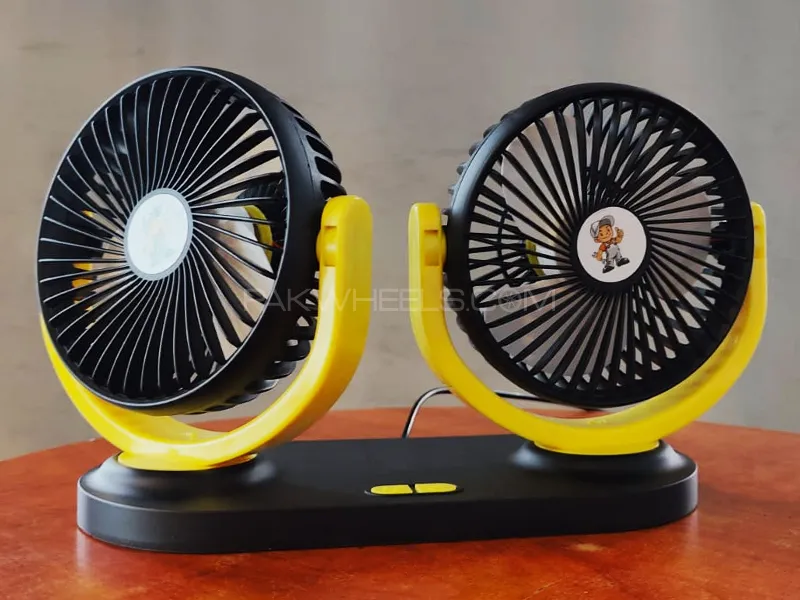Welcome to our blog post on how an electric fan can help improve indoor air quality! We all know that clean, fresh air is essential for a healthy and comfortable living environment. But did you know that the air inside your home can be more polluted than the outdoor air? Yes, you heard it right! From dust particles to volatile organic compounds (VOCs), numerous pollutants are lurking in your indoor space. Luckily, there’s a simple solution at hand – the humble electric fan. In this article, we will explore the role of ventilation in improving air quality and delve into how electric fans can play a vital part in achieving cleaner and healthier indoor environments. So sit back, relax, and let’s dive into the world of better indoor air with electric fans!
Common Pollutants Found in the Home
When it comes to indoor air quality, knowledge is power. Understanding the common pollutants found in your home can help you take proactive steps to improve the air you breathe. So, let’s shed some light on these sneaky culprits!
First up, we have dust particles. Dust may seem harmless enough, but it can contain a multitude of allergens and irritants such as pollen, pet dander, and mold spores. Breathing in these particles can trigger allergies or respiratory issues.
Next on our list are volatile organic compounds (VOCs). These invisible gases are emitted from various sources like cleaning products, paints, carpets, and even furniture. Prolonged exposure to VOCs has been linked to headaches, nausea, and long-term health effects.
Indoor air pollution also includes tobacco smoke – both firsthand and secondhand smoke poses significant risks to your health. The chemicals released by smoking can linger in the air for hours or even days after smoking has occurred.
Mold is yet another common pollutant found in many homes—especially those with high humidity levels or water leaks. Mold not only releases spores that can lead to allergic reactions but can also cause severe respiratory problems if left unchecked.
We cannot forget about household chemicals like cleaning agents and pesticides that release harmful fumes into the air when used improperly or excessively.
Understanding these common pollutants allows us to take action toward improving our indoor air quality! Now let’s explore how ventilation plays a crucial role in achieving cleaner air indoors.
Role of Ventilation in Improving Air Quality
When it comes to maintaining good indoor air quality, proper ventilation plays a crucial role. Ventilation is the process of exchanging stale indoor air with fresh outdoor air, which helps remove pollutants and improve overall air quality.
One of the main benefits of ventilation is that it helps dilute and remove common pollutants found in our homes. These pollutants can include dust, pet dander, mold spores, volatile organic compounds (VOCs), and other airborne particles. Without adequate ventilation, these contaminants can accumulate indoors and contribute to various health issues such as allergies, respiratory problems, and even asthma.
In addition to removing pollutants from indoor spaces, ventilation also helps control moisture levels. Excess moisture can lead to the growth of mold and mildew which not only affects air quality but also poses a risk to our health. Proper airflow through well-ventilated areas can help reduce humidity levels and prevent the buildup of harmful microorganisms.
Ventilation systems come in different forms including natural ventilation (through windows or vents) or mechanical systems like exhaust fans or HVAC systems. Natural ventilation relies on open windows or vents for fresh air exchange while mechanical systems use fans or blowers to circulate air throughout a space.
Electric fans are an effective way to enhance natural or mechanical ventilation in improving indoor air quality. They help promote airflow by moving stagnant air around rooms thus preventing pockets of stagnant polluted air from forming. By doing so they aid in reducing concentrations of potential allergens like dust mites that thrive when there’s little movement in enclosed spaces.
There are different types of electric fans available depending on your needs – ceiling fans for larger rooms where you want consistent airflow throughout the space; tower fans for compact areas where floor space is limited; desk fans perfect for personal cooling at workstations; box fans for creating cross-ventilation by placing them near open windows; and window fans designed specifically for bringing fresh outside air indoors while pushing out stale indoor from another area.
To maximize the benefits of using an electric fan for ventilation, here are a
How Electric Fans Can Help with Ventilation
Electric fans are not just useful for keeping us cool during hot summer days; they also play a crucial role in improving indoor air quality. Ventilation is essential for maintaining a healthy living environment, and electric fans can greatly assist in this process.
One of the main benefits of using an electric fan for ventilation is that it helps to circulate the air in a room. Stagnant air can become filled with pollutants such as dust, pet dander, and even harmful chemicals from cleaning products or furniture off-gassing. By creating airflow, fans help to disperse these contaminants and bring fresher air into the space.
Another way electric fans contribute to better ventilation is by aiding in moisture control. Excessive humidity can lead to mold growth and other issues that negatively impact indoor air quality. Fans help to keep the air moving, reducing moisture build-up and preventing these problems from occurring.
It’s important to note that different types of electric fans offer varying levels of effectiveness when it comes to ventilation. Box fans, pedestal fans, and ceiling fans all have their unique advantages depending on the specific needs of your space. For example, ceiling fans are particularly useful in large rooms or areas with high ceilings as they provide consistent airflow throughout the entire area.
To get the most out of your electric fan for improved ventilation, there are a few tips you should keep in mind:
1) Position your fan strategically: Place it near windows or doors where fresh outside air can enter easily.
2) Use multiple fans if needed: In larger spaces or areas with poor airflow, having more than one fan will enhance circulation.
3) Clean your fan regularly: Dust buildup on fan blades reduces its effectiveness at circulating clean air—regular cleaning ensures optimal performance.
4) Consider investing in an exhaust fan: This type of fan draws stale indoor air out through vents or windows while bringing fresh outdoor air inside.
While electric fans are valuable tools for improving ventilation and enhancing indoor air quality, they should not be relied upon as the sole solution. It’s
Different Types of Electric Fans and Their Benefits
When it comes to improving air quality in your home, electric fans can be a great tool. But with so many different types of fans on the market, how do you choose the right one for your needs? Let’s take a look at some popular options and their unique benefits.
1. Ceiling Fans: These are ideal for circulating air throughout larger rooms or open spaces. They provide a gentle breeze that helps to cool down the room while also keeping the air moving. This continuous circulation can help prevent stagnant air and reduce the buildup of pollutants.
2. Tower Fans: If space is limited, tower fans are a great option. They have a sleek design and take up minimal floor space while still providing effective airflow. The tall shape allows them to distribute air evenly across the room, making them perfect for bedrooms or living rooms.
3. Box Fans: Affordable and versatile, box fans are portable units that can be placed in any location where extra ventilation is needed. They’re particularly useful in kitchens or areas prone to moisture buildup as they help remove excess humidity from the air.
4. Window Fans: Designed specifically for use in windows, these fans draw fresh outdoor air inside while expelling stale indoor air outwards through another window or opening in your home. This helps create cross-ventilation and improves overall indoor air quality.
5. Desk Fans: Ideal for personal use at workstations or bedside tables, desk fans provide direct airflow exactly where you need it most. They’re small but mighty, ensuring you stay cool during hot summer days without compromising on comfort or productivity.
Each type of fan has its unique benefits when it comes to improving indoor air quality by promoting proper ventilation and reducing pollutant levels within your home environment.
Tips for Using an Electric Fan to Improve Air Quality
1. Position the fan strategically: To maximize the effectiveness of your electric fan in improving air quality, it’s important to position it correctly. Place the fan near a window or door, facing outwards. This will help create a cross breeze that helps remove stale air and bring in fresh outdoor air.
2. Use oscillation mode: Many electric fans come with an oscillation feature that allows them to rotate from side to side. Utilize this function as it helps circulate the air more evenly throughout the room, preventing stagnant pockets of air where pollutants can accumulate.
3. Clean and maintain your fan regularly: Over time, dust and dirt can build up on the blades and grills of your electric fan, reducing its efficiency and potentially circulating these particles back into the air. Regularly clean your fan by wiping down the blades with a damp cloth or using a vacuum cleaner attachment to remove any debris.
4. Consider using HEPA filters: Some electric fans come equipped with HEPA filters which are designed to capture small particles like pollen, pet dander, and dust mites. If you suffer from allergies or have respiratory issues, investing in an electric fan with built-in HEPA filtration can greatly improve indoor air quality.
5. Combine with other ventilation methods: While an electric fan is effective at improving airflow within a room, it’s also important to utilize other ventilation methods for optimal results. Open windows whenever possible to allow fresh outdoor air in and use exhaust fans in bathrooms and kitchens to remove moisture and odors.
By following these tips, you can harness the power of an electric fan not only for cooling purposes but also for enhancing indoor air quality!
Other Ways to Improve Indoor Air Quality
In addition to using an electric fan to improve indoor air quality, there are several other methods you can implement. Here are some additional ways to ensure the air in your home is clean and healthy:
1. Keep it Clean: Regularly dusting, vacuuming, and mopping can help reduce the buildup of allergens and pollutants in your home. Pay special attention to areas where dust tends to accumulate, such as carpets, curtains, and upholstery.
2. Use Natural Air Purifiers: Certain plants like aloe vera, spider plant, peace lily, and snake plant have been found to naturally purify the air by removing toxins and releasing oxygen. Adding these plants throughout your home can contribute to cleaner indoor air.
3. Control Humidity Levels: High humidity levels can promote the growth of mold and mildew which can negatively impact air quality. Use dehumidifiers or exhaust fans in high-moisture areas such as bathrooms or basements.
4. Avoid Harsh Chemicals: Many household cleaning products contain chemicals that release harmful volatile organic compounds (VOCs) into the air. Opt for natural alternatives or make your cleaning solutions using ingredients like vinegar or baking soda.
5. Proper Ventilation: Open windows whenever possible to allow fresh outdoor air inside. This will help dilute any pollutants present indoors.
6. Install Air Filters: Consider installing high-quality air filters in your HVAC system that are capable of capturing small particles such as pollen or pet dander.
By implementing these strategies alongside utilizing an electric fan for improved ventilation, you can significantly enhance the overall indoor air quality within your home.
Remember that maintaining good indoor air quality is essential not only for comfort but also for promoting better respiratory health for both you and your family members! So take proactive steps today towards creating a healthier living environment through proper ventilation and regular maintenance practices.


